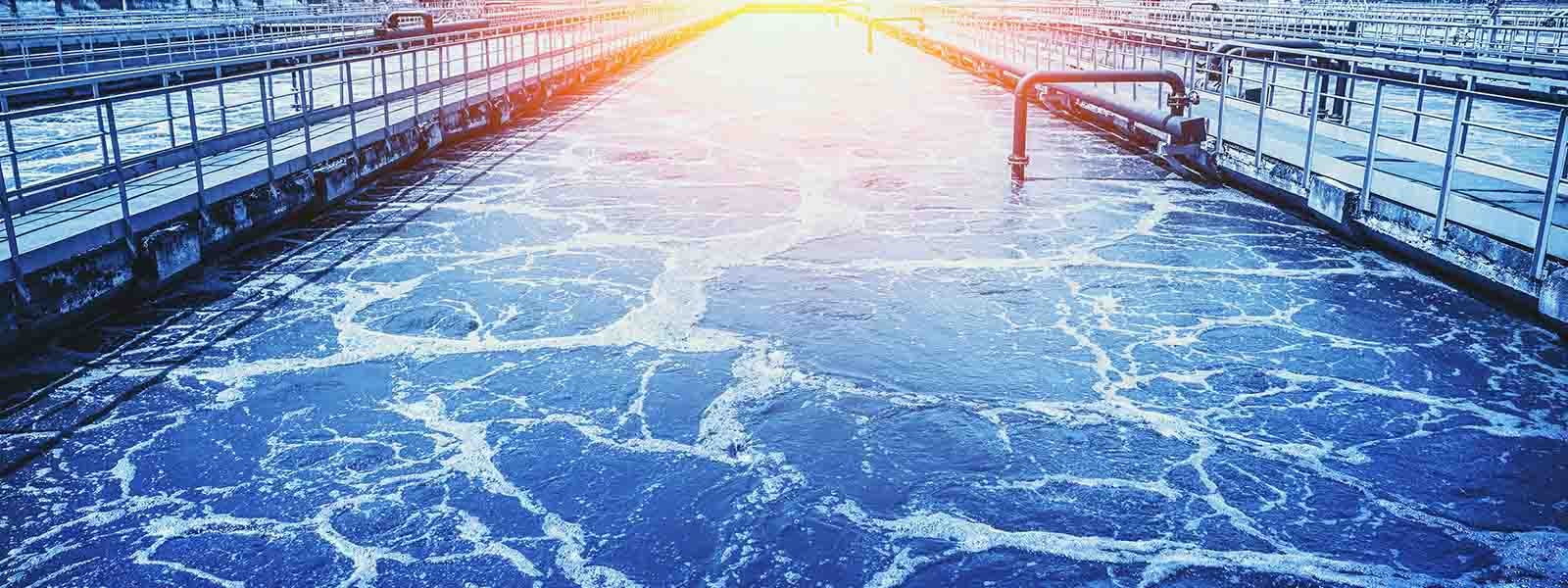Waste water treatment: using the right technology for sustainability.
Wastewater treatment and environmental sustainability are two intertwined issues that need to be addressed in the best and most competent way.
It is no coincidence that Goal 6 of the UN's Agenda 2030 'Clean Water and Sanitation' includes the protection and restoration of freshwater ecosystems as one of the principles for ensuring clean drinking water worldwide. A right, that of access to clean water, which is unfortunately still denied to 2.2 billion people today.
Wastewater treatment is of primary importance in achieving this goal because it closes the integrated cycle and delivers unpolluted water back to the environment.

Wastewater treatment closes the integrated water cycle.
The treatment of wastewater, both civil and industrial, generally involves its discharge into the sewerage system and transfer to treatment plants where it is suitably treated before being discharged into watercourses and then returned to nature. The treatment of industrial wastewater can in some situations already take place at the factory. In this case, through special plants, the process water is treated so that it fully complies with the imposed discharge limits or to be reused in production processes, with a view to the circular economy.
In general, purification involves various mechanical, biological and chemical processes. This requires the handling of wastewater both in the initial lifting and transport phase and in the transfer phase during the various treatment stages. In all this, electric hydraulic pumps are a key element and can make the difference in terms of plant efficiency.
Wastewater treatment pumps can be found in the pumping sumps, inside the recirculation tanks and in the passage between tanks. When dealing with sewage, the most suitable pumps are submersible drainage pumps for dirty water. These pumps are the heart of lifting and purification systems.
Submersible drainage pumps: the ideal solutions for pumping and handling wastewater.
Reliability is one of the most important requirements for pumps used in these applications.
It is therefore better to choose products made of durable materials, such as stainless steel, and able to ensure easy installation and maintenance. But it is above all the type of liquid to be pumped, i.e. particularly dirty water, that determines the ideal characteristics for a submersible drainage pump.
Waste water is dirty, muddy water, characterised by the presence of debris, sediment and suspended solids. Consequently, electric pumps must be able to operate without the risk of clogging, so as to ensure the continuity of the purification process and avoid damage to pipes and equipment.
The vortex impeller is an excellent solution to this problem. In practice, the geometry of the impeller is such that it creates a vortex depression inside the pump casing that favours the movement of long fibres and solid particles. In this regard, when choosing a model, it is always advisable to check the pump's allowable passage cross-section, or in other words the maximum diameter of solids that can be present in the liquid without causing damage to operation. There are submersible dirty water pumps that are also equipped with a suction grinder, a device that macerates solids, facilitating their movement.
Finally, a remark on energy consumption. In sewage treatment plants, pumps represent, together with the blowers for supplying air to the oxidation and nitrification tanks, a particularly significant source of energy consumption. Acting on this aspect with electric pumps equipped with high-efficiency motors and correctly sized for the needs of the plant helps to contain the costs and environmental impact of treatment. In this way, purification, already essential in itself for the protection of nature, can become even more sustainable.
























